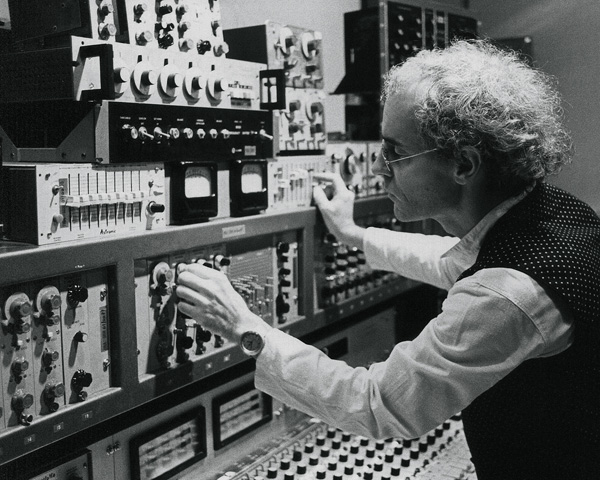
François Bayle, french, born in Madagascar, student then assistant of Pierre Schaeffer (1958 to 62), director of INA/GRM musical research center from 1975 to 1997, can be seen as the founder of acousmatic music.
Acousmatic music is a specialised sub-set of electroacoustic music. It is created using non-acoustic technology, exists only in recorded form in a fixed medium, and is composed specifically to be heard over loudspeakers.
The term comes from the akusmatikoi, the outer circle of Pythagoras’ disciples who only heard their teacher speaking from behind a veil. In a similar way, one hears acousmatic music from behind the ‘veil’ of loudspeakers, without seeing the source of the sound.
Acousmatic composers use this invisibility of sound sources as a positive aspect of the creative process, in one of two ways. The first is to separate the listener from the visual and physical context of the sounds being used, in order to permit a more concentrated and abstract form of listening unencumbered by the real-world associations or ‘meaning’ of the sounds. This form of listening is known as reduced listening (a term coined by the acousmatic music pioneer Pierre Schaeffer), and it allows both acoustic and synthetic sounds to be used to create an abstract musical discourse the focus of which is the detail of individual sounds, and the evolution and interaction of these sounds. The second approach is to deliberately evoke real-world associations by using identifiable sounds (real world objects, voices, environments) to create mental images in sound.
Here you can listen to the Espaces inhabitables, d’après Bataille et Jules Vernes (1967)

 Philippe Manoury
Philippe Manoury
 Keith Rowe, forse il prototipo dei chitarristi improvvisatori di scuola anglosassone, esegue un brano di Cornelius Cardew tratto dall’album “A Dimension of Perfectly Ordinary Reality” del 1990.
Keith Rowe, forse il prototipo dei chitarristi improvvisatori di scuola anglosassone, esegue un brano di Cornelius Cardew tratto dall’album “A Dimension of Perfectly Ordinary Reality” del 1990.